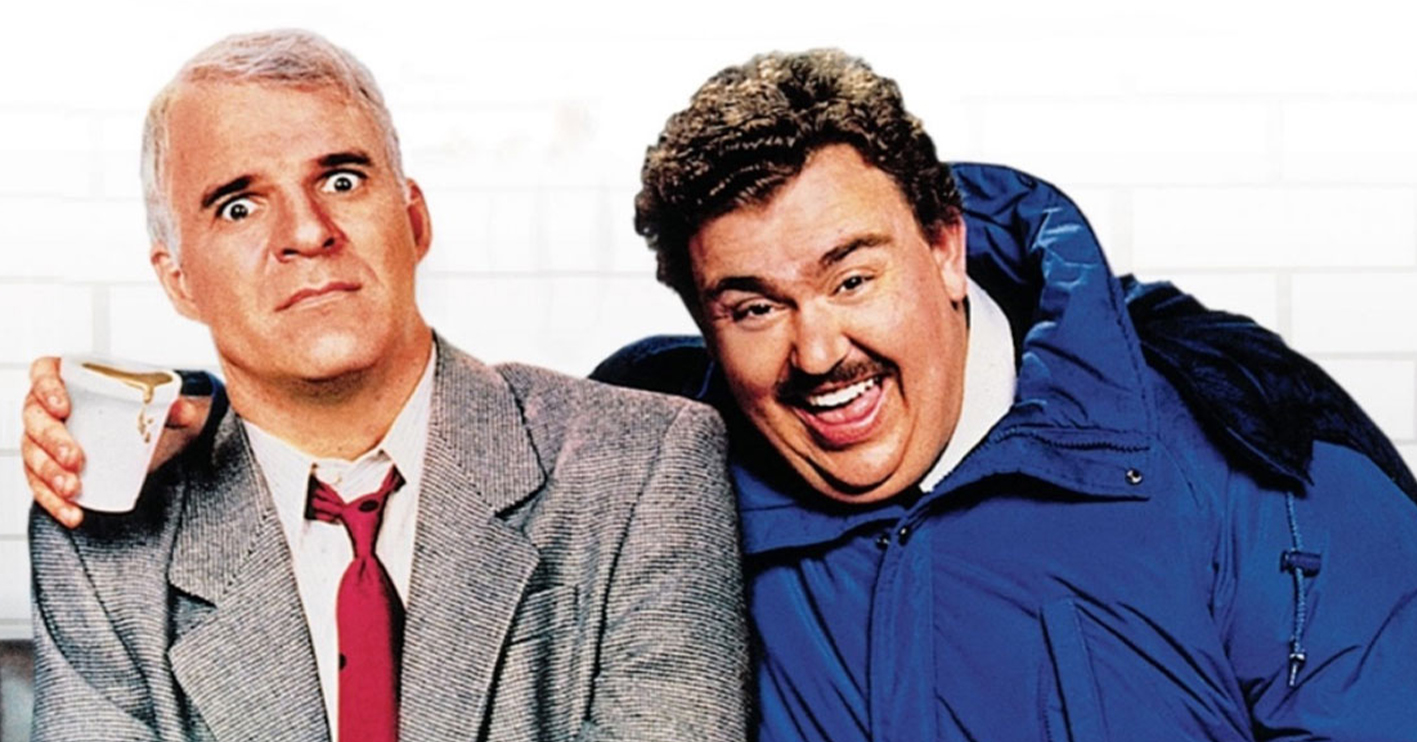The sadly missed writer, producer and director John Hughes may be best remembered for his 80s high school comedies, but he made at least one bona fide classic aimed at older audiences: 1987’s Planes, Trains and Automobiles, which stars Steve Martin as Neal, a stressed-out executive struggling to get home for Thanksgiving.
To make matters worse, Neal finds himself stuck with John Candy‘s Del, an overbearing salesman. Did you know the following fascinating facts about the film?
20. John Hughes was inspired by a real long-distance journey from hell

In writing the script for Planes, Trains and Automobiles, John Hughes drew on his own personal experience of a nightmarish journey home, back from his days working in advertising before he got into film. In Hughes’ case, a flight from New York to Chicago was grounded by snow, and once he finally got underway he wound up being redirected to Denver, then Phoenix, and didn’t wind up getting home for five days.
This unpleasant experience didn’t only form the basis of Planes, Trains and Automobiles; it also informed a later, even more successful John Hughes production, Home Alone. The perennial Christmas favourite centres on Macaulay Culkin’s accidentally abandoned youngster, but a subplot follows his mother Catherine O’Hara as she struggles to get back to him from France.
19. Real travel companies were reluctant to be associated with the film

Planes, Trains and Automobiles depicts every traveller’s nightmare, with successive travel companies spectacularly failing in their endeavours. This presented a significant challenge to the filmmakers, as many genuine travel companies did not want to be associated with the film in any way, for fear of negative publicity.
To get around this, the studio had to rent a 20 mile stretch of railroad track and construct sets for the airline and car rental scenes, and even had to come up with their own names and logos for fictitious travel companies. This was an unusual circumstance, as travel companies are among the many businesses usually happy to pay for product placement deals in movies.
18. The infamous car rental scene lasts exactly 60 seconds

Although it’s R-rated, Planes, Trains and Automobiles is for the most part a fairly mild and family-friendly comedy, aside from a few sexual references, and one notorious scene in a car rental office. At this point, Steve Martin’s Neal has finally reached his limit, and vents his frustration at Edie McClurg’s clerk in a flurry of F-words.
It’s here that Planes, Trains and Automobiles really earns that restrictive rating, and all within the space of a single minute. We’re not speaking figuratively here: from the moment Martin starts speaking, the scene lasts exactly sixty seconds, during which time we have a startling 19 drops of the F-bomb: 18 by Martin, and once at the very end by McClurg.
17. The first cut of the film was over four hours long

When Steve Martin signed on to play Neal Page, he was taken aback by the length of the script. John Hughes’ original screenplay went on for 145 pages, which was unusually long for a comedy. It’s generally estimated that one page of script translates to a minute of screen time, so a standard comedy script would is generally somewhere in the region of 90 to 100 pages.
Hughes was a famously prolific writer, often producing full drafts of screenplays within a few days. He proceeded to do further revisons on the Planes, Trains and Automobiles script during production, which added to the amount of footage shot. According to Martin, Hughes’ first cut of the film last four and a half hours, roughly three hours longer than the 92-minute cut that was ultimately released.
16. Elton John wrote a Planes, Trains and Automobiles theme song which was never released

Back in the 80s, pretty much any hit movie had to have an original theme song from a noted pop star, and this had been the plan for Planes, Trains and Automobiles early on. It had been intended that the film would feature a bespoke theme song by Elton John. The legendary British singer-songwriter worked on the track with lyricist Gary Osborne.
Sadly for fans of both Planes, Trains and Automobiles and Elton John, the song never wound up being used in the movie for legal reasons. Film studio Paramount Pictures wanted ownership of the song’s master recording, but John’s record label refused. A legal battle ensued, and as a result of this the song has never been released.
15. John Hughes angered the studio by spending $100,000 on Neal’s house

As anyone who’s seen Planes, Trains and Automobiles will remember, it isn’t until the end of the movie that Neal finally gets home to his wife and children. With this in mind, it may be a bit of a surprise that Neal’s house was a specially built set which cost $100,000. Even for a big budget studio movie, that’s a lot of money to spend on something so simple which appears so briefly.
Planes, Trains and Automobiles had a budget of $15 million, which was by no means an insubstantial sum for a movie back in 1987. Even so, Hughes’ decision to spend so much money on Neal’s house did not go down well with executives at Paramount. This might explain why after his next film She’s Having a Baby, Hughes would not work for Paramount again.
14. Some fans consider Kevin Bacon’s cameo to be a crossover with She’s Having a Baby

Kevin Bacon briefly appears in Planes, Trains and Automobiles, credited as ‘Taxi Racer.’ It has been theorised by some fans that Bacon is playing the role of Jake from She’s Having a Baby, another movie written and directed by John Hughes. To further promote this link, there’s a scene in the movie in which Neal’s wife Susan (Laila Robins) is watching She’s Having a Baby on TV.
But here’s where things get a bit confusing: She’s Having a Baby wasn’t even released until February 1988, more than two months after Planes, Trains and Automobiles hit cinemas in November 1987! Such is the strange nature of movie release schedules: some films are rushed into cinemas as soon as they’re ready, whilst others sit completed on the shelf for months or more before they’re released.
13. Jeri Ryan was an extra on the film, but was fired for laughing
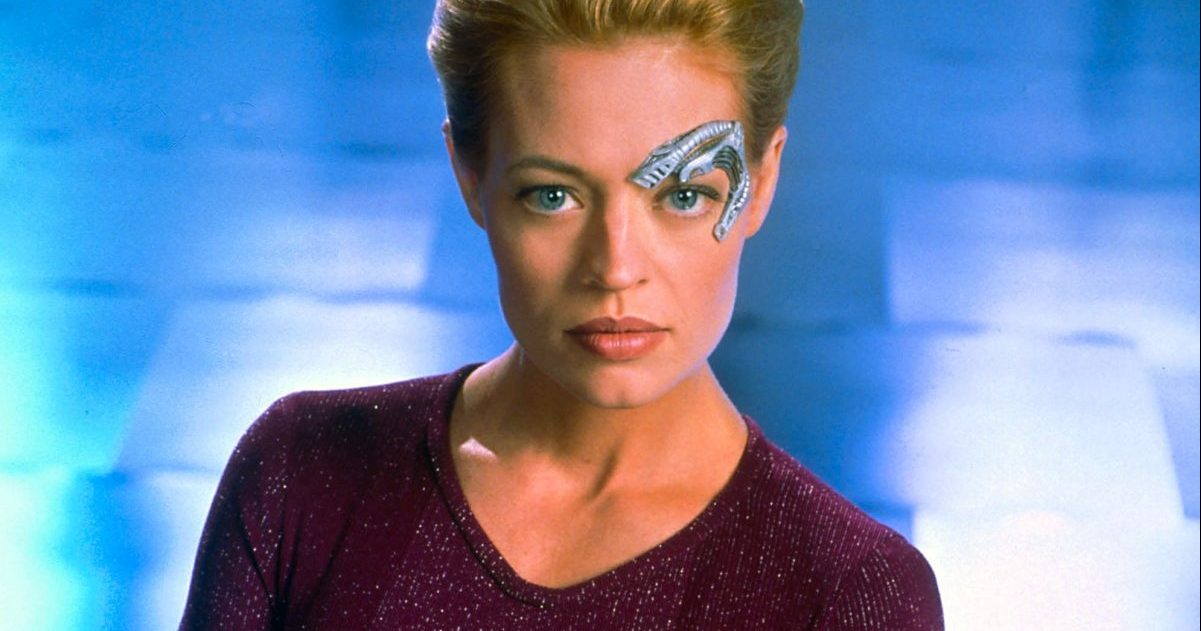
The bus ride scene is one among the many comedic set pieces in Planes, Trains and Automobiles which never fails to provoke laughter. Sadly, this was also true on the set, and it cost one newcomer their job. The scene very nearly boasted an early appearance from actress Jeri Ryan, later famed for her role on TV’s Star Trek: Voyager.
Aged 19 at the time, Ryan was an extra playing a passenger on the bus. Unfortunately, Ryan wound up being fired by director John Hughes because, by her own admission, she couldn’t keep herself from laughing at Candy and Martin’s comedy stylings (but wouldn’t we all under the circumstances?) The scene was subsequently re-shot without her.
12. The production had to relocate due to a lack of snow

Planes, Trains and Automobiles follows a hellish cross-country journey, and by all accounts making the film wasn’t a picnic for the cast and crew either. Originally, the plan had been to shoot the bulk of the film in and around Chicago, the city closest to Hughes’ heart where the writer and filmmaker set the bulk of his films.
They hit a snag when it came time to shoot the movie, as it was set at Thanksgiving and it needed to look like winter. Unfortunately, when cameras were rolling there simply wasn’t enough snow in Chicago to suit the needs of the filmmakers. As a result, they were forced to move the production to the more wintry climes of Buffalo, New York.
11. Will Smith and Kevin Hart are set to appear in a remake
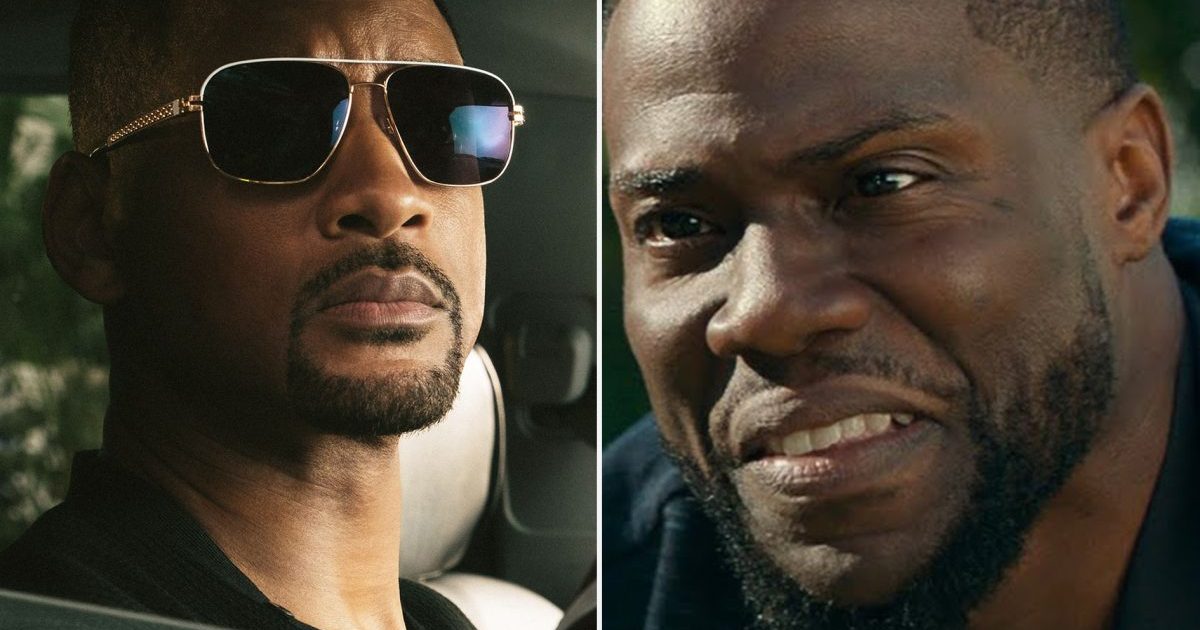
Earning $49 million at the box office off the back of a $30 million budget, Planes, Trains and Automobiles wasn’t the biggest commercial success on release. Today, however, it’s fondly looked back on as one of the best comedies of the 80s, and has become a perennial favourite for many Americans in the Thanksgiving period.
As a result of this, many fans were displeased in August 2020 when it was announced that Paramount are working on a remake, with Will Smith and Kevin Hart set to take over the roles that previously went to Steve Martin and John Candy. Curiously, this isn’t the only John Hughes/John Candy movie that Hart has been linked to; he’s also said to be working on a remake of The Great Outdoors.
10. Paul Young’s record company would not let his version of Everytime You Go Away to be used on the soundtrack
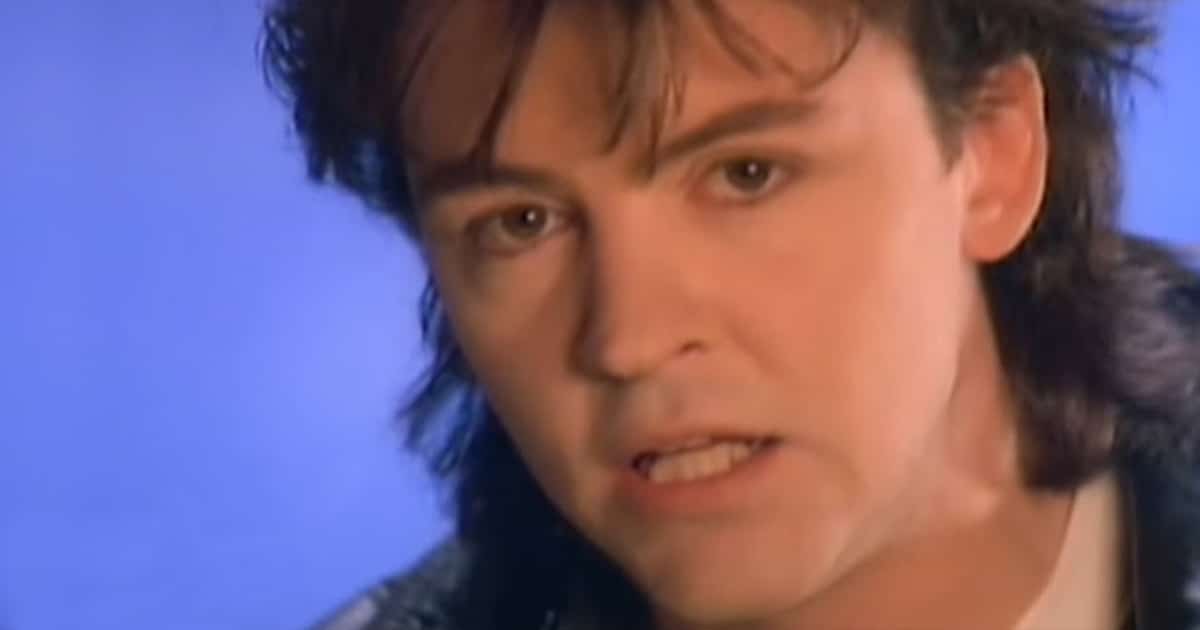
The emotional climax of Planes, Trains and Automobiles features the popular 80s ballad Everytime You Go Away. Although the song was written by Daryl Hall and first recorded with his group Hall & Oates, it was later released as a single for British singer Paul Young, for whom it wound up one of his biggest hits.
John Hughes wanted to use Young’s version of the song in Planes, Trains and Automobiles, but Young’s record company CBS refused. As a result, a cover version of the song was recorded especially by Blue Room. Years later, Paul Young declared on Twitter that he was “so disappointed and deflated when my damn record company wouldn’t let my version be used” in the film.
9. The film was re-edited when test audiences thought Del was a freeloader
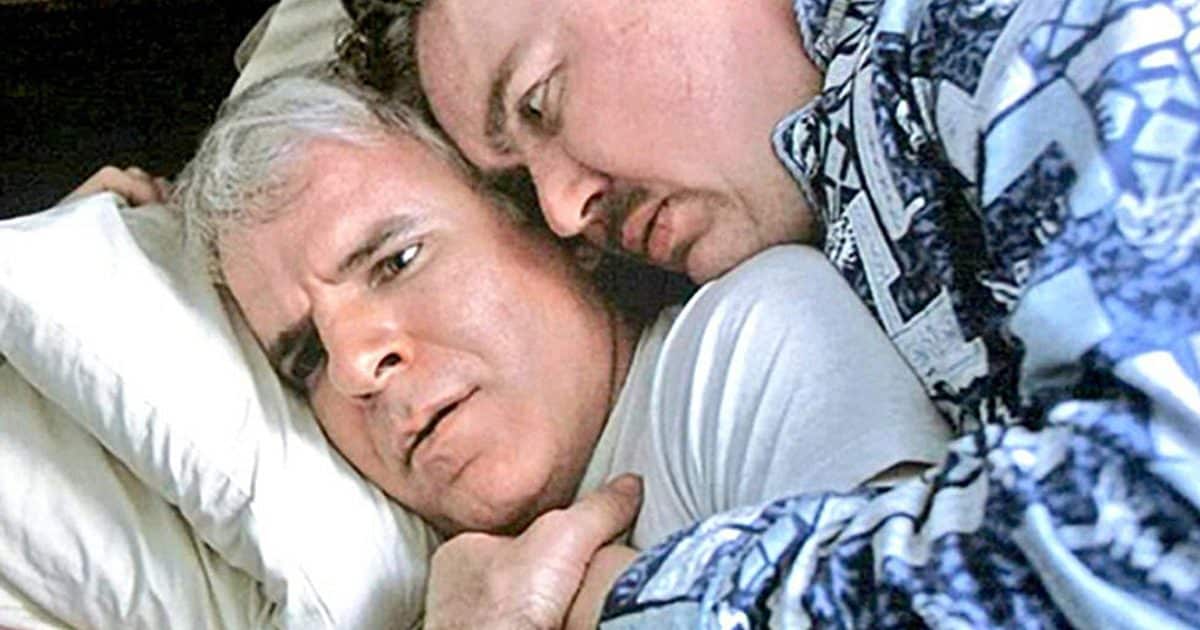
As so much footage had been shot for Planes, Trains and Automobiles, some of the different cuts produced in the editing room were radically different from the film we ended up with. The way the film was edited also had a significant impact on how the audience viewed the characters, and at initial test screenings a lot of viewers left with negative feelings about Steve Martin’s Neal and John Candy’s Del.
At one test screening, Del was seen as a shameless freeloader taking advantage of Neal, who audiences saw as a weak-willed pushover. This had not been Hughes’ intention at all, so in collaboration with film editor Paul Hirsch, they reinstated scenes showing the two men accidentally switching credit cards, and Del telling Neal that he will pay him back.
8. Howard Deutch almost directed the film instead of John Hughes
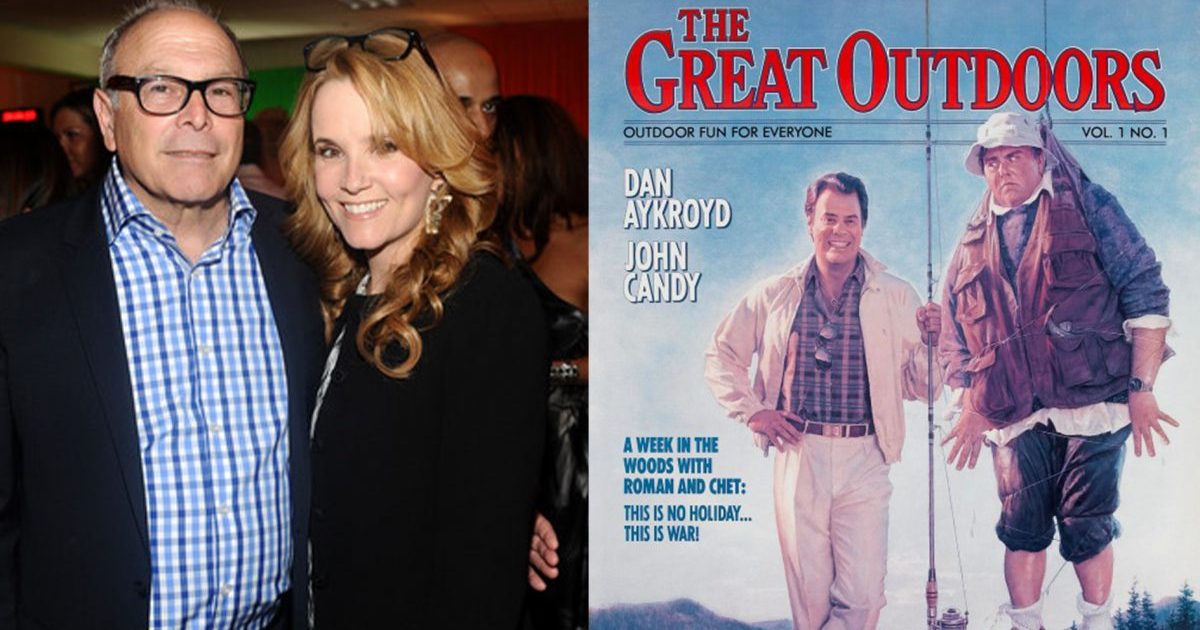
One of the consequences of John Hughes being such a prolific screenwriter was that he simply didn’t have the time available to direct all his movies himself. For this reason, Hughes’ scripts were often taken on by other directors, and one of the writer-producer’s most trusted collaborators in this regard was Howard Deutch. Originally a music video director, Deutch made his feature debut with one of the best-loved John Hughes productions of them all, Pretty in Pink.
Deutch followed this with another film written and produced by Hughes, Some Kind of Wonderful (on which he met his future wife Lea Thompson), and initially he was also going to call the shots on Planes, Trains and Automobiles. However, when Steve Martin signed on Hughes decided to direct it himself. Deutch would instead direct Candy in The Great Outdoors, which proved to be his last Hughes collaboration.
7. Supporting actor Troy Evans was able to buy a house when he was kept on set longer than expected
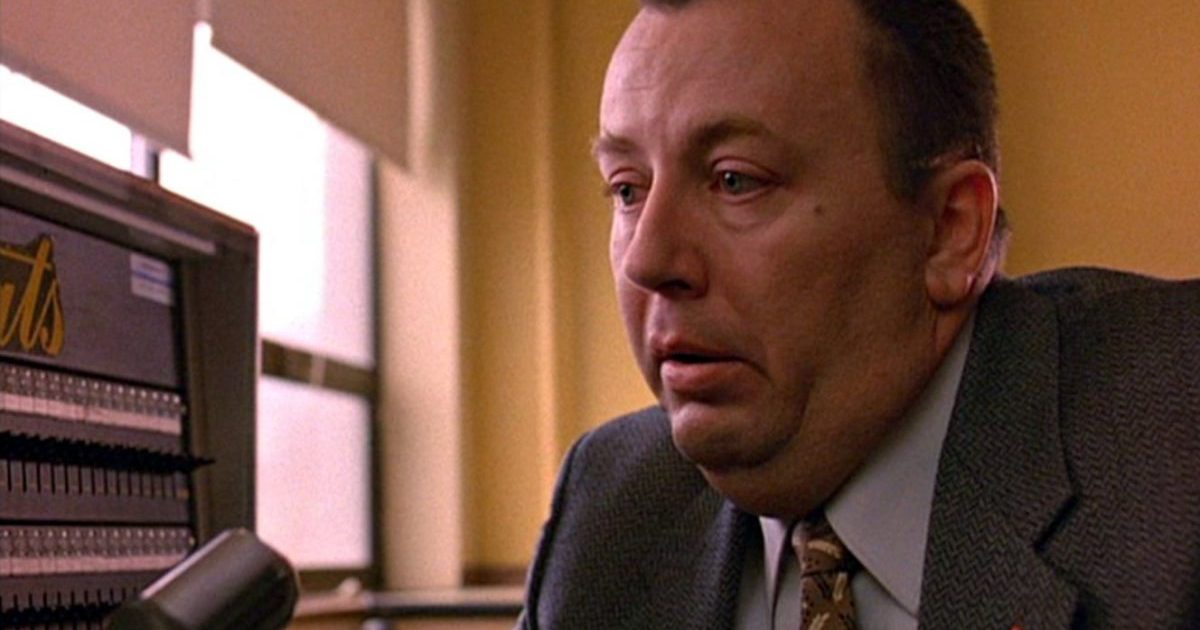
Troy Evans makes a small, uncredited appearance in Planes, Trains and Automobiles as the anti-social truck driver. This brief cameo was originally meant to be only a day’s work, for which Evans was to receive a minimal fee. However, when work on the scene in question was delayed due to bad weather, director John Hughes ordered that the actor be kept on set until they were ready to shoot.
This meant that Evans wound up staying on the production’s payroll for several more days than was originally intended – and as a result of this, he earned a lot more money for his time, reportedly enough to make a down payment on a house. In the years since, Evans has clocked up many more roles on film and TV, including long-running parts of ER and more recently Bosch.
6. Michael McKean gets fourth billing for a 90 second cameo

Planes, Trains and Automobiles is very much the kind of movie we call a two-hander; in other words, it centres squarely on the two leads for pretty much the duration, with no other actor taking anywhere near as much screen time. Even so, it’s a little surprising that Michael McKean is billed fourth in the cast list – behind Laila Robins as Neal’s wife Susan – for a cameo which lasts just a minute and a half (although a great deal more was originally shot).
Even so, McKean (who appears very briefly in the film as a State trooper) is probably the best known actor in the movie after Martin and Candy. A renowned comedian, he remains best known for director Rob Reiner’s cult classic This is Spinal Tap, as well as his role on TV sitcom Laverne and Shirley. More recently, McKean has been seen in TV’s Good Omens, as well as Grace and Frankie.
5. Steve Martin didn’t know Owen actor Dylan Baker was going to wipe spit on his hand

One among the many memorable cameo roles in Planes, Trains and Automobiles goes to actor Dylan Baker, who plays the somewhat unsanitary Owen. With the encouragement of John Hughes, Baker ad-libbed most of Owen’s strange tics and idiosyncrasies, and one unscripted moment in particular genuinely caught Steve Martin unawares.
Without letting Martin know, Hughes instructed Baker to wipe saliva in his hand immediately before shaking hands with Martin in the scene. As a result, the surprised and repulsed look on Martin’s face is entirely genuine, and by all accounts he rushed off to wash his hand the moment Hughes called cut, much to the amusement of everyone else on set.
4. A strip club sequence was shot but left out of the final cut

With the exception of that one scene in which Steve Martin swears a bit more than might be deemed necessary, Planes, Trains and Automobiles is a largely family-friendly movie with nothing that would be deemed too inappropriate for younger or more sensitive viewers. This might not have been the case, however, if they had left in a scene that took place in a strip club.
Actress Debra Lamb recalls of the scene, “John Candy and Steve Martin [come into the strip club] after their car blows up. And they come in to use the phone and John Candy gets sidetracked and enthralled with the dancers… it was all improv and everybody was loving it.” Unfortunately for Lamb, she only learned her scene hadn’t made the final cut when she attended a cast and crew screening.
3. One moving moment was captured when Steve Martin didn’t know the camera was on
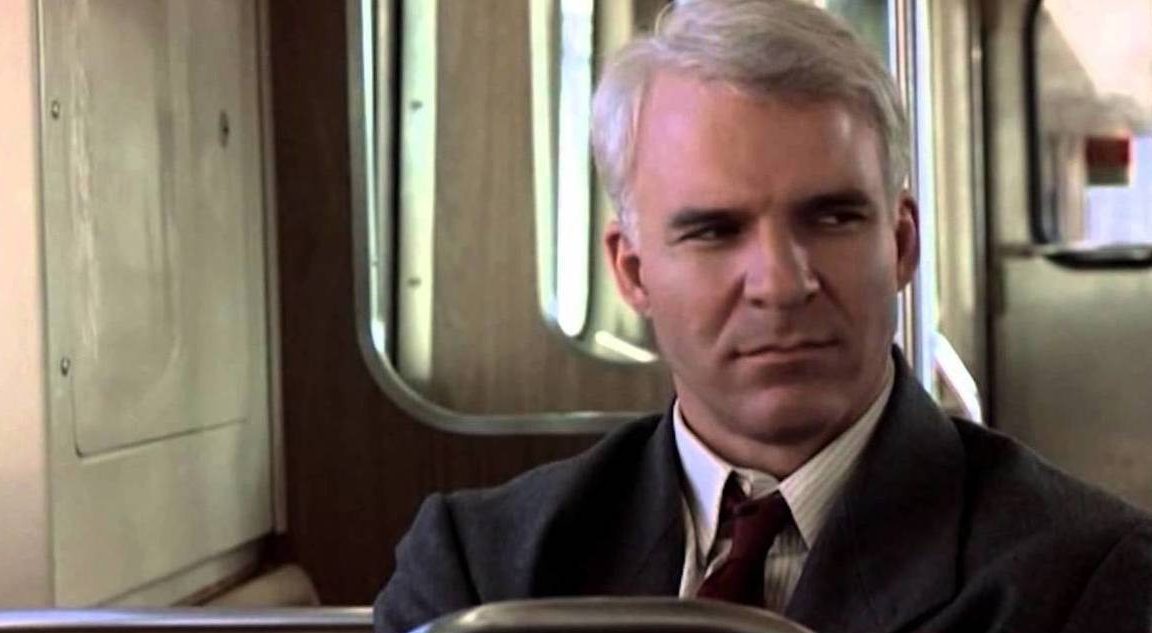
While Steve Martin’s Neal spends the bulk of Planes, Trains and Automobiles butting heads with John Candy’s Del, he eventually comes to realise that Del is basically a decent person who simply struggles with loneliness. This is conveyed in one wordless moment when Neal sits alone on the train thinking about his new friend with unexpected fondness.
What makes this moment all the more remarkable is that Martin was not directed to give this reflective expression; in fact, the actor wasn’t even aware the camera was rolling. John Hughes explained afterwards that he had simply let the camera keep rolling between takes, and in going through the raw footage felt that Martin had a “beautiful” look on his face that would work for that scene.
2. Neal’s wife originally thought he was having an affair

The original, excessively long cut of Planes, Trains and Automobiles featured a fully-blown subplot that was completely excised from the final cut that made it to screens. As Neal is so far away from home, and keeps coming up with all manner of unlikely-sounding excuses over the phone, his wife would be forgiven for being a little suspicious.
In the first cut of the film, Laila Robins’ Susan was indeed suspicious of her absent husband: she believed him to be having an affair, and assumed that this ‘Del’ character that he kept talking about was simply a work of fiction designed to distract her from his infidelity. This explains Susan’s emotional reaction when she meets Del at the end: she is flooded with relief to learn Neal wasn’t lying to her.
1. Critics called it John Candy’s best work ever
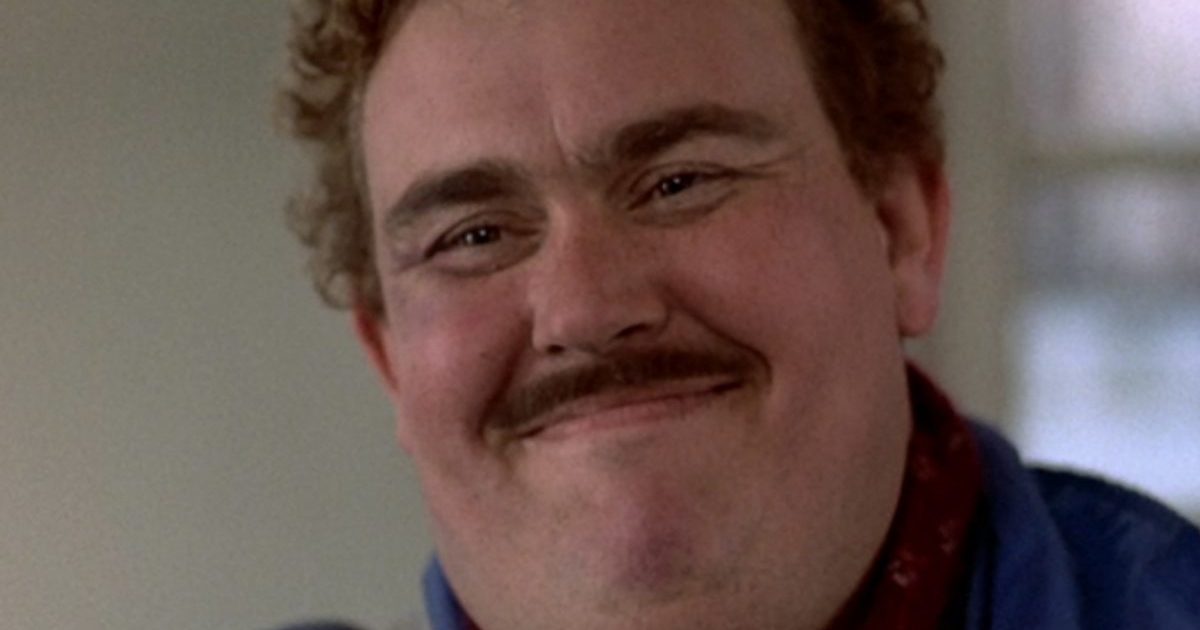
Before 1987, John Hughes had exclusively directed teen comedies (Sixteen Candles, The Breakfast Club, Weird Science and Ferris Bueller’s Day Off), so there had been some doubts that he could successfully transition into making movies geared toward a broader audience. Happily, Planes, Trains and Automobiles proved all naysayers wrong, inspiring almost universally positive reviews.
The film was especially noted for giving John Candy his strongest role up to that point; the actor became a good friend of Hughes, and would star in three more of his films: The Great Outdoors, Uncle Buck and Home Alone (plus Only the Lonely, which Hughes produced but didn’t write). However, it is said that Candy himself considered Planes, Trains and Automobiles his finest work, a sentiment Steve Martin is believed to share.

